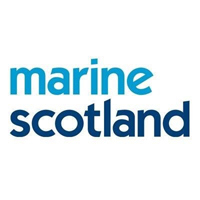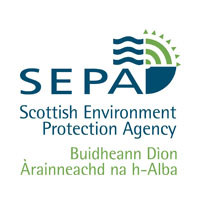Today is World Oceans Day. All across the globe people have organised events and activities to celebrate and raise awareness of why we need to protect and conserve our oceans, seas and coastal waters.
Scotland's environment web
June 08, 2016
Here, in Scotland, we have good cause to celebrate. With around 19,000km of coastline (that's 8% of Europe's coast) we are quite literally surrounded by the sea - supporting our economy, environment, culture and well-being. Within our species rich waters you'll find cold water corals, marine mammals and all manner of fish and shellfish. Our seas not only support thriving seabird populations but our own fishing, aquaculture and energy industries, including renewables. Our dramatic coastline, stunning beaches and marine wildlife attract visitors from all over the world, and provide endless opportunities for people to get out and enjoy the marine environment - whether that's in or on the water for the more adventurous or simply enjoyed from dry land.
But although about 20% of Scots live within 1km of the sea and you'll never be more than 65km from the coast wherever you are in Scotland, we often take this amazing resource for granted, not realising the impact of our activities. And it is these impacts, along with climate change and ocean acidification, that are the biggest threats facing our marine environment.
Learn more about Scotland's marine environment
Scotland's environment website has a wealth of information and data to help you explore and learn more about our marine environment.
- In the State of Scotland’s environment report – Marine video, Colin Moffat, Head of Science at Marine Scotland, explains more about our marine environment and the key challenges facing it.
- You can find out more about the condition of Scotland's marine environment, the threats it faces and what’s being done to look after it.
- Explore Scotland’s marine environment using our maps. Whether you’re interested in the fishing effort in our seas by UK vessels, water quality classification of our estuaries or where our marine protected areas are, there are a wide range of map layers covering marine related data available to search.
- Using the data analysis applications you can take a closer look at data for bathing water quality, trends and possible correlations between biotoxins and phytoplankton in relation to shellfish, and the latest figures for marine cage fish farms.
- Want to get involved in helping to protect Scotland’s marine environment? Check out project finder where you can find details of marine related citizen science monitoring and action projects that you can take part in. From the more practical projects like the Great British beach clean and the great nurdle hunt, to data collection projects looking for you to record what you see and find – seashore creatures, marine mammals, jellyfish, etc. - when you’re out and about. There’s something to suit everyone and your recordings will provide invaluable data about the state of the marine environment.
A word from our partners
Find out who else is working to protect and improve our marine environment and how you can get involved.
Healthy Oceans, Healthy Planet - World Oceans Day
World Oceans Day on 8 June 2016 is a global day of ocean celebration and collaboration for a better future. This year's theme is ‘Healthy Oceans, Healthy Planet’ and individuals and organisations across the planet are taking action for prevention of plastic pollution in our ocean.
Marine litter is a problem throughout the world's oceans. And while it can be made up of a range of materials, the dominant litter type is plastic. Plastic is a real problem as it not only causes harm to wildlife and marine habitats, but it also takes a very long time to degarde so persists in the environment for hundreds of years. An increasing type of plastic marine litter is microplastics. These are tiny pieces of solid plastic no more than 5mm in size, that can be easily ingested by marine organisms and enter the food chain.
Want to know more about marine litter and microplastics? Take a look at the following:
Marine Scotland
Marine Scotland, a Directorate of the Scottish Government, is responsible for the sustainable management of our seas. From marine planning and licensing that help achieve good environmental status and protect marine biodiversity and the management of fisheries resources, to promoting sustainable economic growth of the marine renewable industry, providing scientific advice and carrying out research – Marine Scotland is involved in a wide range of areas relating to our marine and coastal environment.
There is lots of useful and interesting information about the work of Marine Scotland available online. Here are a few suggestions to get you started:
Scotland’s Marine Atlas – Information for the National Marine Plan is an award winning publication that maps the condition of Scotland’s seas, based on scientific evidence from data and analysis and supported by expert judgement. It was developed by Marine Scotland working with the Scottish Environment Protection Agency (SEPA), NatureScot, the Joint Nature Conservation Committee (JNCC) and Marine Alliance Science Technology Scotland (MASTS). The partnership continues to prepare for future assessments of the seas and to oversee the content of National Marine Plan interactive (NMPi) - Marine Scotland’s web portal. Using NMPi, you can access spatial data and information for both national and regional marine planning. It also hosts the information that supports assessment of Scotland’s seas.
Scotland adopted its first national marine plan in March 2015. This provides a regulatory framework for all sustainable development in Scotland’s seas - both Scottish inshore waters (out to 12 nautical miles) and offshore waters (12 to 200 nautical miles). Supporting documents and information relating to the plan are also available on the Marine Scotland website.
In 2014, the Scottish Government commissioned a study on marine recreation and tourism activity in Scotland to help fill gaps in missing information and provide baseline information for marine planning. You can read the report and its key findings on the Marine Scotland website.
The Marine Scotland blog is a great source of information about ongoing and new projects. Recent posts feature two exciting new marine spatial planning projects – the NorthSEE project, which aims to improve trans-boundary planning in the North Sea; and the SIMCelt project, which will test new stakeholder engagement tools to support regional planning and explore the challenges of cross-border spatial planning.
Interested in management of our fisheries resources? Follow the progress of the programme of Wild Fisheries Reform and read more about how Marine Scotland is continuing to work with the fishing industry to implement the discard ban (known as the Landing Obligation), which aims to end the wasteful practice of throwing edible fish (normally dead) back into the sea. Progress has been made and a phased plan will run to 2019.
Marine Scotland has lots of great videos and photos showcasing our marine environment. The clip of dolphins playing at the bow of the research vessel Alba na Mara is guaranteed to bring a smile to your face. Or why not take a look at some historic footage of how we used to monitor ocean currents or experience what it’s like to be out on a research vessel in the Faroe Shetland channel during December.
To bathe or not to bathe?
That is the question. And you’ll find the answer on the Scottish Environment Protection Agency (SEPA) website and, at 29 of Scotland’s bathing waters, displayed on electronic message signs. SEPA is responsible for monitoring water quality of Scotland’s 84 designated bathing waters and works closely with partners to protect and improve water quality, undertake beach management and provide public information. Learn more about bathing waters on the SEPA website.
In addition to bathing waters, you’ll find further information about how SEPA is protecting and improving the marine environment on the website, including information about aquaculture and the National Marine Monitoring Buoy network, which helps assess the state of our marine environment.
Supporting a sustainable marine renewables industry
NatureScot has recently published guidance to support the development of tidal energy and help protect marine wildlife. The guidance will help developers, consultants and regulatory bodies, assess the risk of marine wildlife colliding with underwater turbines and promotes a standardised approach to collision risk assessment for tidal energy projects.
You can find further information and guidance about managing activities and industry in the marine environment, Marine Protected Areas and Priority Marine Features on the NatureScot website.
Marine Conservation Society
The Marine Conservation Society (MCS) is the voice for everyone who loves the sea. They work to secure a future for our living seas, and to save our threatened marine wildlife before it is lost forever.
Levels of beach litter have doubled over the last two decades. Marine Conservation Society works to clear our seas of the rising tide of rubbish that is so dangerous to sea life, including seabirds, whales and dolphins. If you want to join the fight against marine litter why not sign up to this year’s Great British beach clean.
71% of Europe's fish stocks are overfished or depleted. Once common fish, such as skate and cod are now rare in many areas. Marine Conservation Society works to reduce the overfishing that is devastating the life in our seas, and promotes sustainable seafood alternatives. To help you to choose sustainable fish, check out this handy guide at FishOnline.
Sea Champions is the Marine Conservation Society's national volunteer programme offering environmental volunteer opportunities in the UK. Launched in 2012, the programme offers volunteers the chance to take part in marine animal surveys, beach cleans and litter surveys, and various campaigns to help save our seas, shores and wildlife. Why not volunteer today.
What lies beneath: Scotland’s hidden heritage
The marine environment isn’t just about the wildlife that lives there and the quality of the water but also encompasses our underwater heritage. This includes wrecks, harbours and remains of human settlements and is as important to identify, investigate and protect as our heritage on land. Take a look at the Historic Environment Scotland website to learn more about this fascinating topic and find out how you can get involved in conserving our underwater heritage.
And finally...
Our colleagues at Marine Scotland have been telling us all sorts of fascinating facts about our marvellous marine environment so we thought we share a few with you.
Did you know that...
- Scotland's seas are six times the size of our land mass.
- Fish scales are used in lipstick. Yes, they really are. Pearlescence - the silver shiny substance found in fish scales - is often used in cosmetics to give them that glow and shimmer.
- There is more DNA in a bucket of seawater than in the human body.
- Nano-silver particles often used for sock freshness, end up in the sea and cause harm.
For more fascinating facts check out the Marine Scotland website.
Adobe Acrobat Reader is the free, trusted leader for reliably viewing, annotating and signing PDFs.
Download Adobe Acrobat Reader





